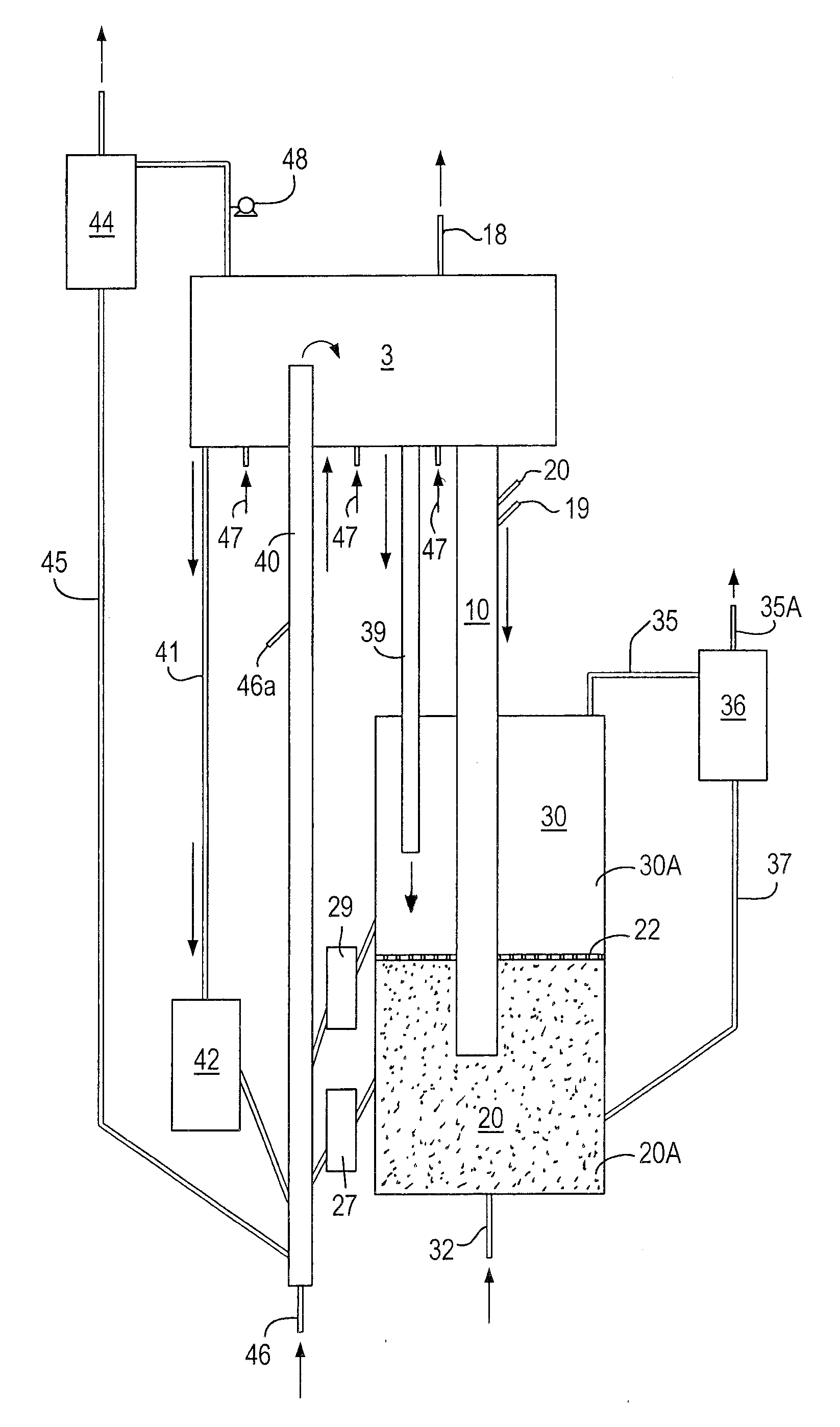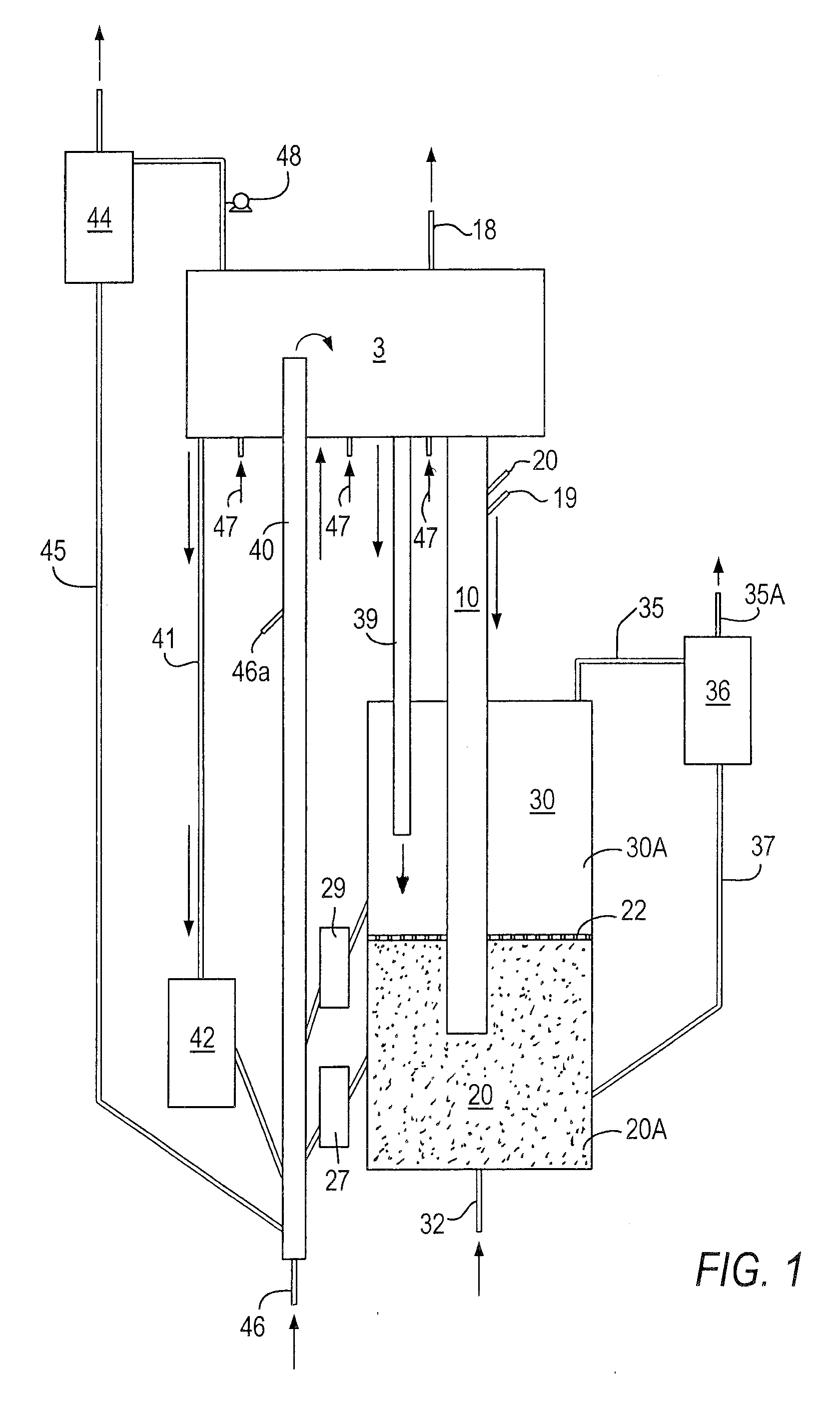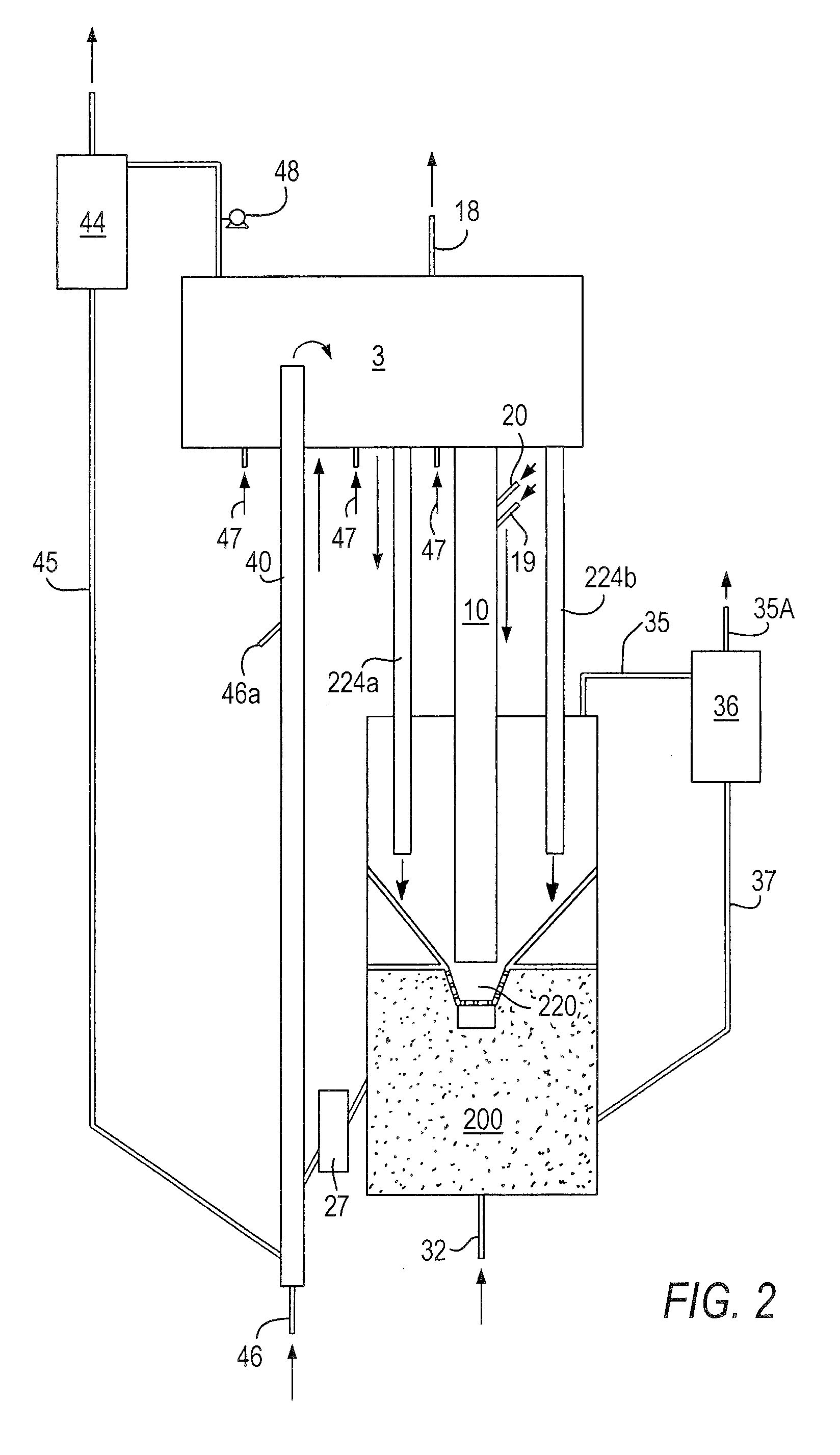Chemical looping combustion process with multiple fuel reaction zones and gravity feed of oxidized particles
- Summary
- Abstract
- Description
- Claims
- Application Information
AI Technical Summary
Benefits of technology
Problems solved by technology
Method used
Image
Examples
example
[0077]The following example describes the operation of the system illustrated in FIG. 1. The particulate oxygen carrier (OC) is nickel oxide on a nickel / alumina support having a density of 2725 kg / m3 and an oxygen transport capacity RO of about 10.9 wt percent, but only about 13.6 percent of the oxygen participates in the reaction, yielding an actual oxygen transport capacity of about 1.5 wt percent which is calculated as follows:
RO wt %×Wt of OC=Available O2 (1)
[0078]The composition of the liquid hydrocarbon heavy fuel oil (HFO) that is introduced in the down flow reactor (10) is as follows:
CompositionWt %C82.7H10N0.6S5.7O1
[0079]The HFO has the following characteristics:[0080]Density@25° C.=1019.9 kg / m3[0081]Pour point=+15° C.[0082]Softening point[0083]HHV=40,925 MJ / kg[0084]LHV=38,775 MJ / kg
[0085]The feed is injected at 6.126 kg / s. The nickel oxide required to provide the needed oxygen for the complete combustion of the injected fuel is 984.6 kg / s. The flow of metal oxide is divide...
PUM
 Login to View More
Login to View More Abstract
Description
Claims
Application Information
 Login to View More
Login to View More - R&D
- Intellectual Property
- Life Sciences
- Materials
- Tech Scout
- Unparalleled Data Quality
- Higher Quality Content
- 60% Fewer Hallucinations
Browse by: Latest US Patents, China's latest patents, Technical Efficacy Thesaurus, Application Domain, Technology Topic, Popular Technical Reports.
© 2025 PatSnap. All rights reserved.Legal|Privacy policy|Modern Slavery Act Transparency Statement|Sitemap|About US| Contact US: help@patsnap.com



